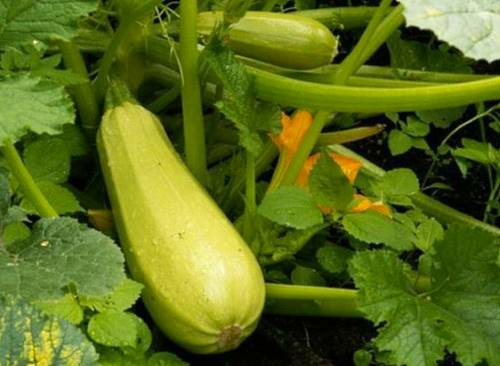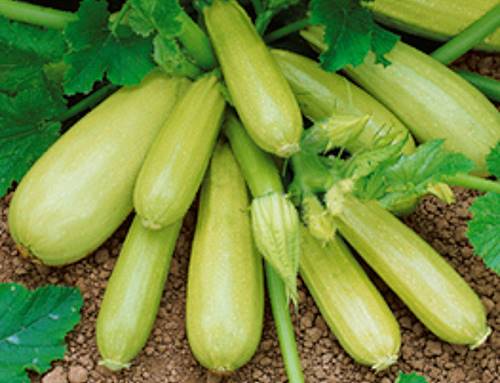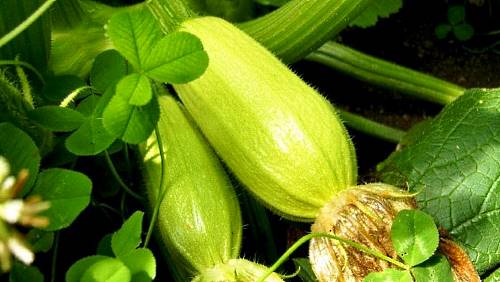Review of the best varieties of zucchini for the Moscow region with a photo
Most gardeners appreciate zucchini as early maturing, unpretentious vegetables used for cooking vegetable dishes and canning for the winter. This dietary product is also recommended in baby food.
Features of growing zucchini in the Moscow region form their own conditions for choosing the best varieties, based on climatic conditions, the needs and capabilities of gardeners, the size of the sites and storage conditions.
Among the evaluation criteria must be present:
- Productivity.
- Demanding temperature conditions.
- Taste qualities.
- Storage duration.
Considering various zucchini, varieties for the Moscow region can be divided into several groups:
- Traditional varieties of zucchini with white skin.
- Zucchini - zucchini with a denser, multi-colored cover.
- Hybrid varieties.
Each group has its own advantages and disadvantages. So, the hybrids are the most productive, but the seeds will have to be purchased every year, without sufficient guarantees that the variety in the package will be the same. Traditional varieties have the most delicate pulp, as a result of which they are practically not stored. The denser zucchini stay fresh in the refrigerator for over a month, but yield comparatively lower yields.
It is very difficult to evaluate taste, this is a subjective concept, therefore, for each variety there are both ardent adherents and implacable critics.
Here is an overview of the best varieties of zucchini for the Moscow region with a photo, based on our own experience and the statements of amateur gardeners and completely ignoring the advertising characteristics that have not been confirmed in practice.
Almost no list, which includes the best varieties of zucchini for the Moscow region, is complete without the Iskander F1 variety. This variety is unique in its qualities with a very high and very early yield and delicate pale green pulp. The variety takes up a minimum of space in the garden, as it grows in the form of large, spreading bushes, does not branch and does not spread over the area. This variety of zucchini almost does not get sick. For an ordinary family, it is enough to plant three bushes, which will take up to 1.5 sq. meters of space and will provide a stable harvest throughout the summer.

In recent years, the hybrid zucchini "Kavili F1", which is characterized as a super-productive variety, has been increasingly called the best variety. The bush is beautiful spotted, compact. There are a lot of fruits, harvesting is carried out with a zucchini weight of about 300 grams, but even in overgrown fruits, the pulp remains tender and juicy.

Among the white-fruited varieties, one can also name a variety that is not hybrid, this is Rolik. This plant is bushy, compact, each bush bears up to 9 kg of fruits. One of the most cold-resistant varieties. When in doubt when to plant zucchini seeds in open ground in the suburbs, so that they do not freeze, then choose "Roller", it is not afraid of low temperatures. The variety has a strong skin, it can be transported or stored for a long time.

Another popular white-fruited variety has been grown for many years - this is "Gribovskie". These are early ripening cylindrical fruits, which are harvested at a weight of 800-900 g. The yield is stable, about 4 kg of fruits are obtained from the bush. Despite the fact that the variety is very old, it is appreciated for its unpretentiousness and the ability to independently store seeds.Until now it remains the most widespread variety.

The multi-colored varieties of zucchini are referred to as zucchini. They also have a lot of fans, due to the fact that they have the most durable skin. Despite the external color, the flesh of all remains pale white or with a slight greenish-yellow tinge.
The most common varieties in this group are zucchini "Zebra", "Tsukesha" and "Aeronaut".
Zucchini "Zebra" is an early variety for open ground with a high yield (up to 9 kg per bush). It is distinguished by a striped color, in which dark stripes are located along the main light green background. Scourges are formed a little, the bush turns out to be compact. There are few seeds. The variety requires care, as it is easily amenable to disease and is recommended for experienced gardeners who have an idea of how to grow zucchini in the Moscow region.

Zucchini "Tsukesha" is distinguished by its dark green color of fruits, which have an elongated cylindrical shape. The yield is high, the pulp is dense. This variety is often used for canning, as it does not creep when processed at high temperatures. Tsukeshu can be kept in the refrigerator for several months. In the Moscow region, it is preferable to grow under film.

In terms of taste, the greatest number of praise sounds to the Aeronaut variety. It is an early variety with a medium yield. The shape of the fruit is cylindrical with pronounced ribbing, the color is dark green. The pulp is delicious and can be used raw by adding young fruits to salads instead of cucumbers. The peculiarity of this variety is that at first the fruits grow upward, and then bend towards the ground. Thanks to this, young fruits are less affected by pests.

A new Dutch hybrid variety with colored fruits called PARTENON has begun to gain popularity. It is a parthenocarpic hybrid that does not require pollination for fruit set. This quality allows you to get reliable harvests in any weather, rain or intense heat does not interfere with the formation of fruits. The color is dark green, shiny, with small spots. The variety receives high marks for its yield, disease resistance and taste.

Those who like to grow original fruits can be advised the "Ball" variety, which has a round shape and resembles a pumpkin in color. This variety has tasty early ripening fruits.

The variety "Pear-shaped" has small fruits, shaped like pears, yellow in color with dense and juicy orange pulp. It is used in all types of processing, for making sauce, baking and preserving.

The above review of the best varieties of zucchini for the Moscow region with a photo does not claim to be complete. Every year, the collection is replenished with new hybrids, which Dutch breeders tirelessly breed. We recommend planting several already known and favorite varieties in the garden and every year trying out new names that are suitable for growing in the middle lane.